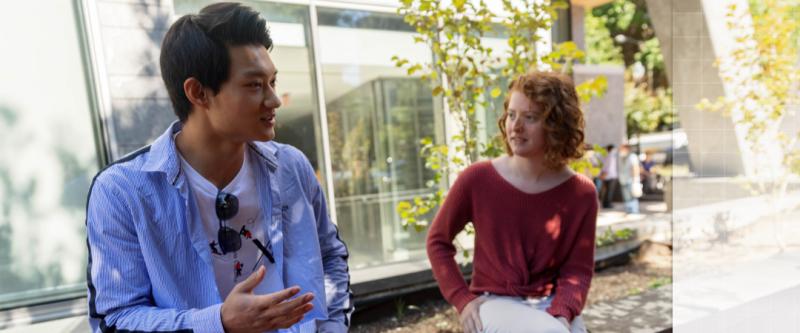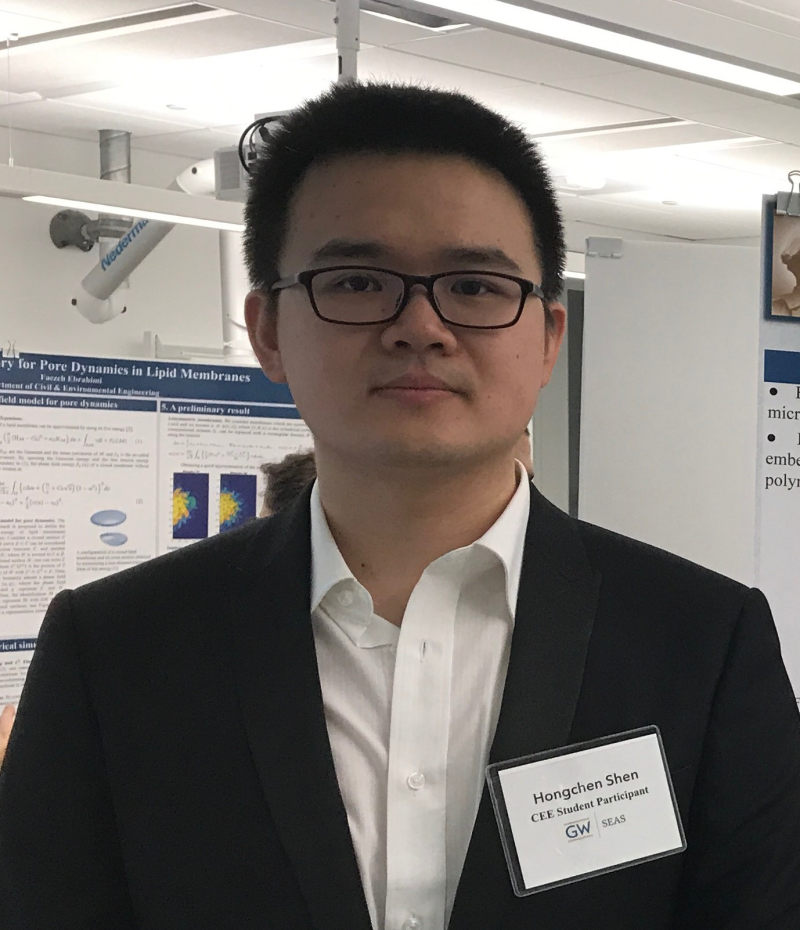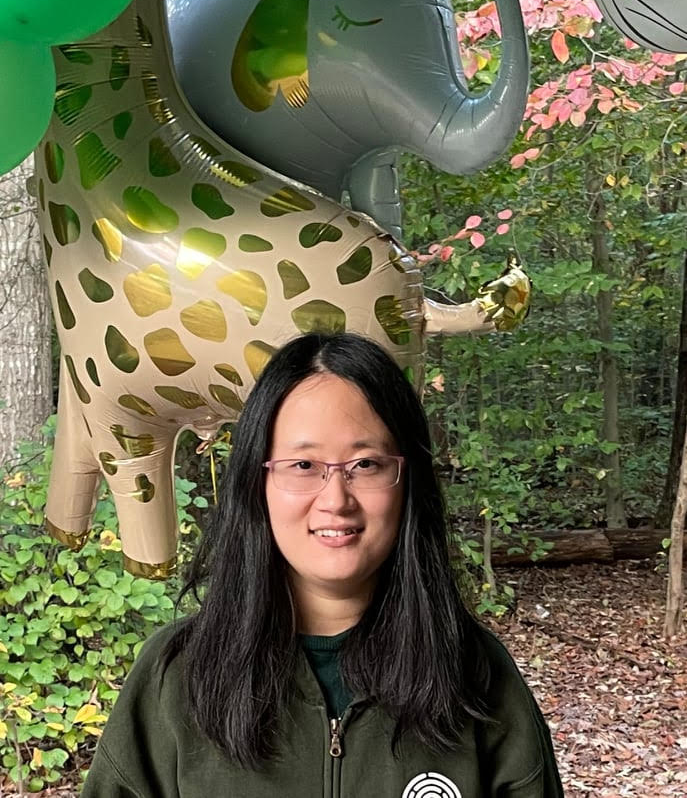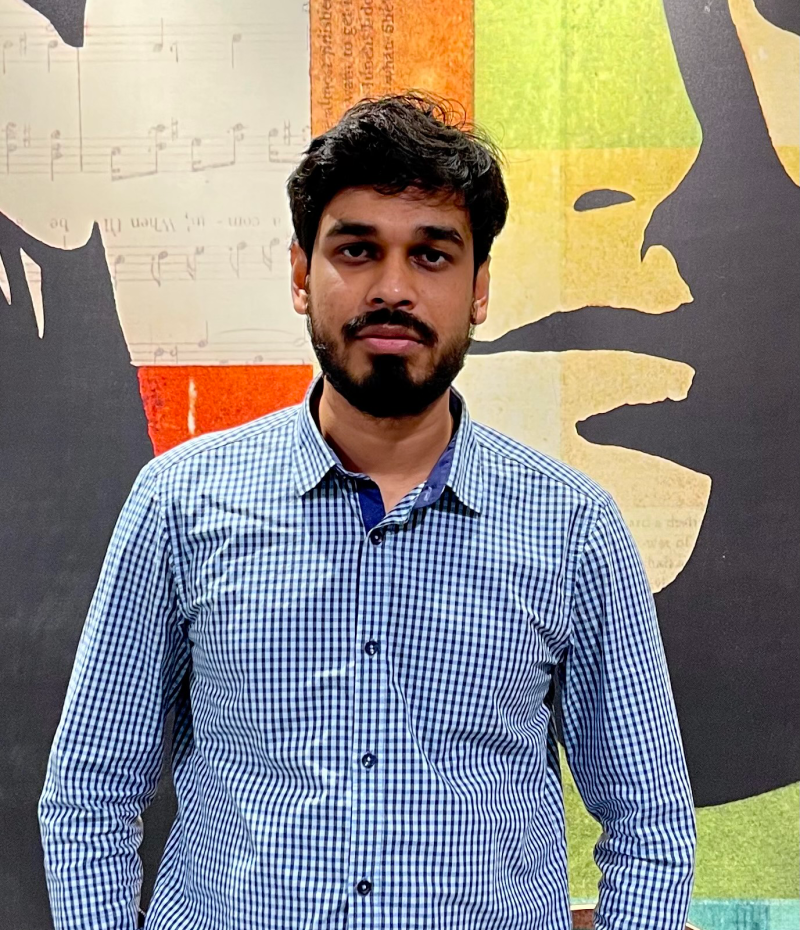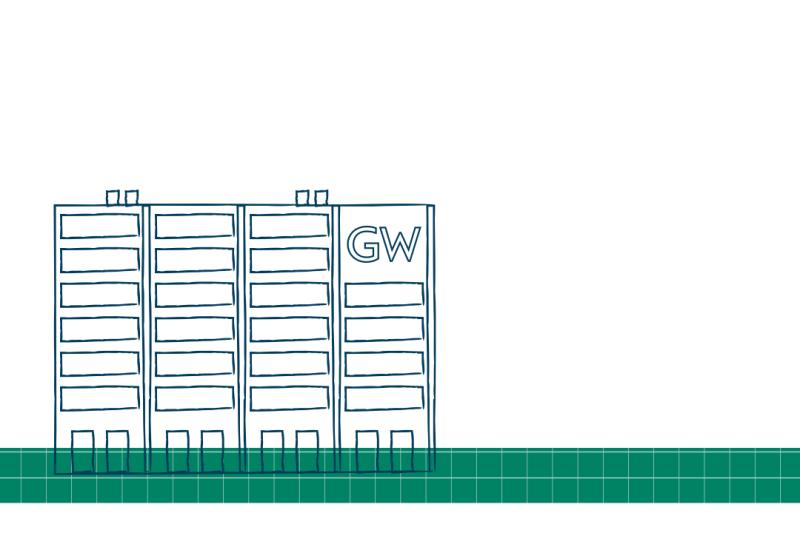Prospective Graduate Students
Prospective Graduate Students
Graduate students at GW’s Department of Civil and Environmental Engineering benefit from a unique combination of advantages. Not only do they get to work on campus in state-of the-art facilities—choosing from an array of civil and environmental engineering sub-fields—but they also get the opportunity to pursue research at one of the many federal research labs and agencies in the Washington, DC area. Meet a few of our students and learn about the research they are doing.
Hongchen Shen
Research focus area: Environmental Engineering
Environmental pathogens, defined as microorganisms which spend substantial lifetime outside human hosts, may cause diseases once they are transmitted into human hosts and raise significant health concerns and economic losses. The two most notorious examples are biofilms on various surfaces and airborne viruses. My research focuses on developing and utilizing functional nanomaterials for controlling environmental pathogens. In particular, photocatalysis mediated by visible-light-responsive graphitic carbon nitride is employed for inhibition and eradication of pathogenic biofilms. Photosensitized electrospun nanofibrous air filters are developed for capturing and killing airborne coronaviruses.
Sarra Lbibb
Research focus area: Geotechnical Engineering
The study of soil stress-strain-strength behavior is of significant interest to the analysis of civil infrastructure systems under various types of loading conditions. In the past three decades, a number of robust soil constitutive models have been developed that can simulate the stress-strain-strength behavior of soils and provide realistic predictions of the soil response in complex boundary value problems. The experimental datasets resulting from field and laboratory tests are becoming increasingly available. My research uses optimization techniques and machine learning approaches to develop constitutive models that are capable of modeling the stress-strain-strength response of granular soils with a higher level of accuracy than it is currently possible. The optimized forms of the constitutive equations and machine learning approaches are also used to automate the process of calibrating the constitutive model against large experimental datasets.
Xiaochen Jin
Research focus area: Materials
Photonics are widely used in numerous areas such as lighting, telecommunication, medicine, and military through light emission, detection and manipulation. My research focuses on group IV alloys based on Si, Ge and Sn, which are attracting research interest as a potential candidate for mid-infrared photonics due to advantages of Si-compatibility, low-cost, environmental-friendliness and tunable band gaps. By applying various atomic-level computational simulation techniques, I work on deciphering complex structures of group IV alloys and its implications on material properties, such as electronic structures and thermodynamic stability. Unraveling structure-property relationships will not only help us understand fundamental mechanisms determining properties, but also provide guidance for experiments to facilitate synthesis of materials with desired properties.
Carmen Lagler
Research focus area: Structural Engineering
I am an Austrian Fulbright Student who is conducting research in the High Bay laboratory, investigating a building member that breaks new ground in earthquake resilience measures: a self-centering unbonded post-tensioned pendulum shear wall. This wall is designed to support a building’s resistance against horizontal earthquake motions due to its perpendicular orientation towards the seismic accelerations. With an innovative circular shape at the bottom surface, it will dissipate the earthquake motion energy by slipping back and forth instead of developing plastic deformations and fractures. This research will lead to a seismic design concept that is unrestricted by traditional material failure limit states. After an earthquake event, the edifice will be able to continue serving its purpose right away, thus improving the building’s economic efficiency and protection of human lives.
Mohaiminul Haque
Research focus area: Transportation Engineering
Every year over a million people die because of road traffic collisions. A better understanding of the interactions between different roadway users is necessary to create a safer and more efficient surface transportation system. My research focuses on modeling mixed roadway traffic in rural and urban environments. The objective is to develop a cognitive based traffic model that can reproduce different traffic phenomena including collision formation and congestion propagation. Through computer simulation and calibration, we aim to gain new insights on the decision making processes leading to different heterogeneous traffic dynamics during challenging conditions. One of the key advantages of this approach is the ability to recreate rare events (such as traffic collisions) in a simulated environment which will allow us to better understand their safety and mobility impact in real-time. A better understanding of the roadway traffic dynamics can help designing technologies to improve the roadway user experience and can be translated into better policies that ensure equitable transportation services to different communities.
Parisa Heydari
Research focus area: Water Resources Engineering
Land-atmosphere interactions, the linkages between the land surface variables such as soil moisture and atmospheric variables such as temperature or precipitation, are a main driver of Earth’s surface water and energy budgets; as such, they modulate near-surface climate, including clouds and precipitation, and can influence the persistence of extreme events such as droughts and floods. Despite their importance, the representation of Land-atmosphere interactions in weather and climate models remains poorly defined, leading to large uncertainties in weather and climate forecasts. Initial soil moisture profile and soil hydraulic parameters are amongst essential environmental parameters of such models that influence the evolution of soil moisture profile as the main land surface variable that controls these interactions. My research focuses on estimating these crucial parameters using data assimilation techniques. Our goal is to combine the horizontal coverage and spatial resolution of remote sensing with the vertical coverage and temporal continuity of soil moisture simulation models to produce highly accurate estimates of soil hydraulic properties and soil moisture profile.
Learn more about our degree programs


